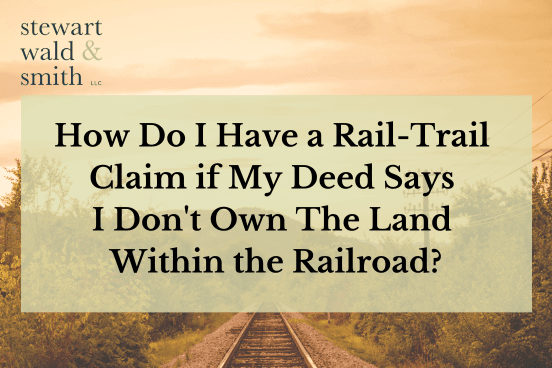
The reason landowners often think they don’t own land in the former railroad corridor is because their deed and/or survey shows their property line does not extend into the railroad corridor. It makes complete sense that the landowner would have that belief based on what the deed and survey show. However, it turns out that belief is usually wrong.
Regardless of what the deed or survey shows, there is a presumption that a landowner who owns land next to a railroad easement owns to the centerline of that easement. This has to do with the nature of a railroad easement. A railroad easement provides the railroad with the exclusive right to use, possess, and control land within the corridor. So, even though a railroad may not own the land, it looks to the world like it does own the land, even to the point of it being able to exclude the entire world from that land, including the actual landowner.
Due to this legal situation, deeds and surveys intentionally omit that the landowner actually owns the land in the railroad corridor. If a deed or survey would instead describe the land as going into the railroad corridor, then a landowner would inaccurately believe he or she could build into or otherwise use that land in the railroad corridor, which just isn’t the case … even though the landowner owns it.
The legal doctrine that accounts for this situation, which we’ve written about elsewhere is called the centerline presumption. The centerline presumption says that if you own land next to an easement (like a railroad easement), then you are presumed by law to own to the centerline of that easement, regardless of what a deed or survey may indicate.
So, to answer the question “How do I have a rail-trail claim if my deed says I don’t own the land within the railroad?” It all comes down to proving that the railroad held an easement along the railroad corridor. This is exactly what Stewart, Wald & Smith do for landowners. When a landowner retains Stewart, Wald & Smith to represent them in a rail-trail case, the firm handles investigating the history of the railroad, how the railroad obtained their interest in the railroad corridor (easement or fee simple) and works to establish liability and negotiate a monetary recovery for the landowner due to the imposition of a rail-trail along their property.

